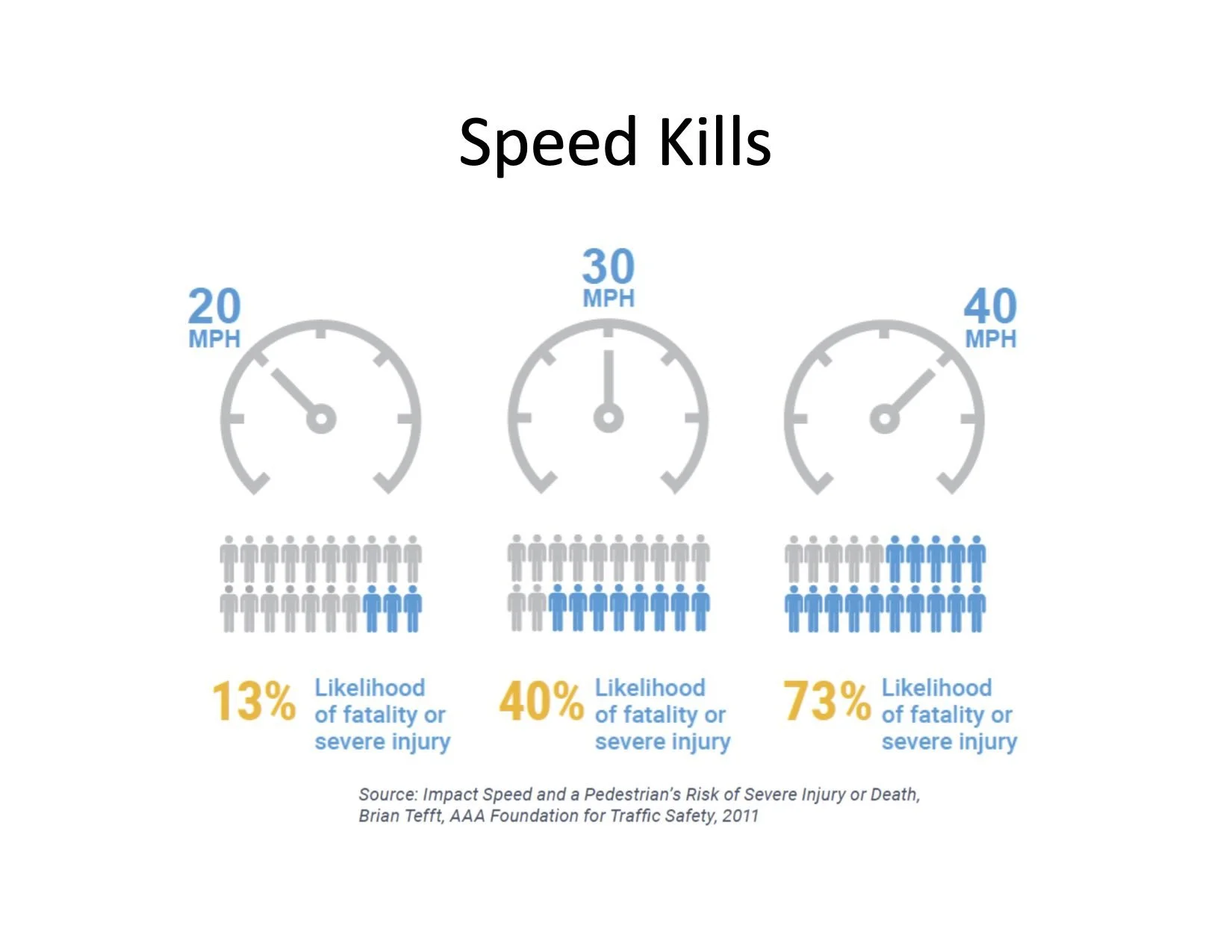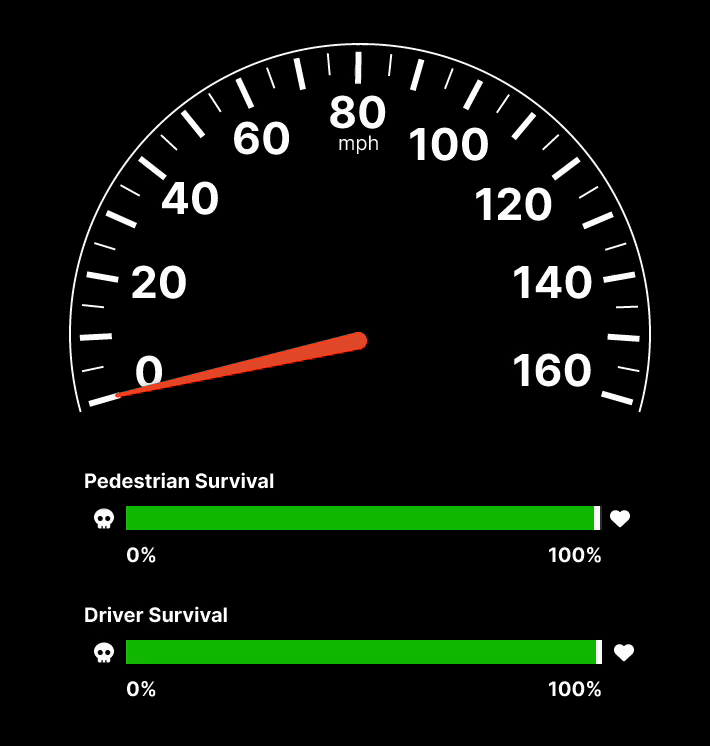What if we made the risks of speeding clear?
The mentality when driving is all about getting to your destination quickly. We drive five to ten miles per hour over the speed limit, knowing that the risk of a ticket is minimal. Police are too busy with many other things to pull you over for five over the speed limit. It’s too much paperwork and too much risk for the officer. The design of our streets is often about speed and not safety. Everything is encouraging drivers to go faster than the posted speed limit.
Traffic fatalities have continued to increase in the U.S. I don’t think we understand the risk of speed. This variation of infographics has been floating around the internet for a long time. Explaining the likelihood of survival for pedestrians.
It wasn’t long ago that smoking was not only common but it was accepted nearly everywhere. I grew up going to restaurants where people would smoke at the table. It was a decades-long campaign of many societal changes and laws to shift the mentality.
“If you look at big social change that happened in the past decades. I think one of the biggest and most incredible is the non-smoking campaigns. Unbelievable change. Many countries, including this one, cut the amount of smokers in half. Even though those people were addicted. And when you look at what strategies led to this, it was positive reinforcements and negative warnings. So you had all the awful pictures on your cigarette pack, and you also had the promise of better health—the possibility for therapy in many countries.”
Stefan Sagmeister
If you are unfamiliar and curious, have a look at this Vox article on the topic.
What if we started to make similar changes for speeding? What if we required speedometers to show the risks?
Here is the data: if you hit someone while driving at 20 MPH, there is a 90% chance they will survive. Twenty feels slow in a car. So, let’s say you are going 30 MPH. Then, there is only a 50% chance of survival. The chances are reduced even further if you are in a vehicle with a very high hood height or if the person you run over happens to be a kiddo.
The typical speed limit around schools is 25 MPH. Yet most people tend to drive at least 5 to 10 over the speed limit, knowing they aren’t going to get a ticket.
Speed limits in cities are often 35 MPH or higher for main streets. At 40 MPH, a pedestrian has a 90% chance of death. How often are you driving above 40 MPH in a city environment? It may feel slow because everyone around you is driving at a different speed. The person riding your bumper wants you to go even faster.
Would a shift in the dashboard help folks better understand the risks they are taking? Could this slow someone down?
There are many other ways to slow traffic. Other countries have been very successful in reducing traffic deaths. There hasn’t been the political will in the U.S. to address this issue truly.
In the U.S., we have primarily focused on the safety of passengers in vehicles. There is still a significant factor of speed here. Our vehicles are designed to go way faster than what is allowed on any highway. So, the speedometer encourages going faster. When 80 MPH is at the center of the dial, and the dial goes up to 160, you are nudging drivers to go faster than is necessary. Can we add in the risk of death to folks in the car?
Even at 60 MPH, a prevalent highway speed, the risk of death for folks in the car drops significantly. As speed increases, that risk continues to increase. I don’t think we often process or even discuss how risky this behavior is.
Driving is an accepted necessity, and traffic violence is largely unquestioned.
The above ideas would only serve to give information. They are not actual change. If you have read the fantastic book Nudge by Nudge, Richard Thaler, and Cass R. Sunstein’s groundbreaking work you will know there are more significant nudges we can do. We have governors on e-bikes and scooters to ensure they can’t exceed a certain speed. Micro-mobility scooters even shut off in certain areas. The technology exists for this to happen with cars. We just haven’t implemented it. The real change needed is in how we design our city streets. Small changes go a long way toward ensuring cars drive a bit slower and make our roads safer. Changing behavior is difficult but not impossible.


